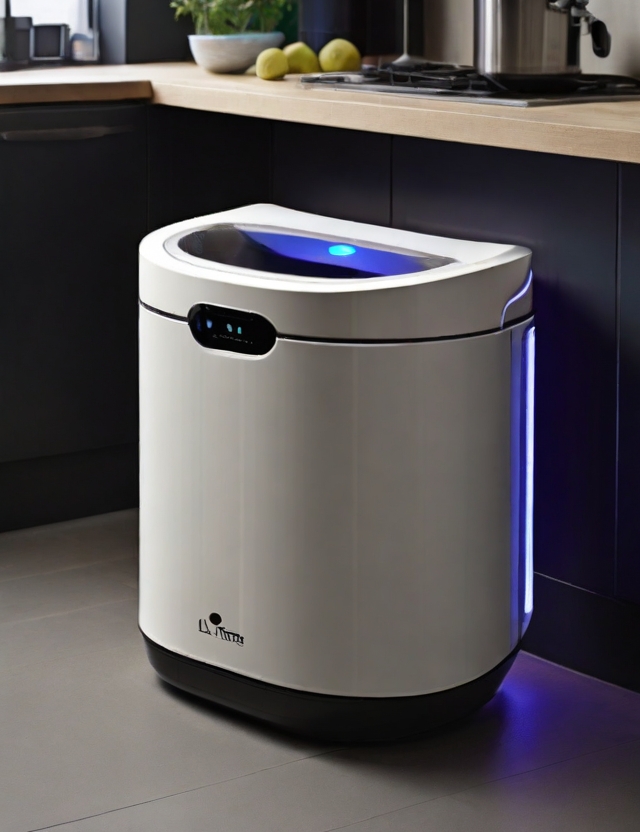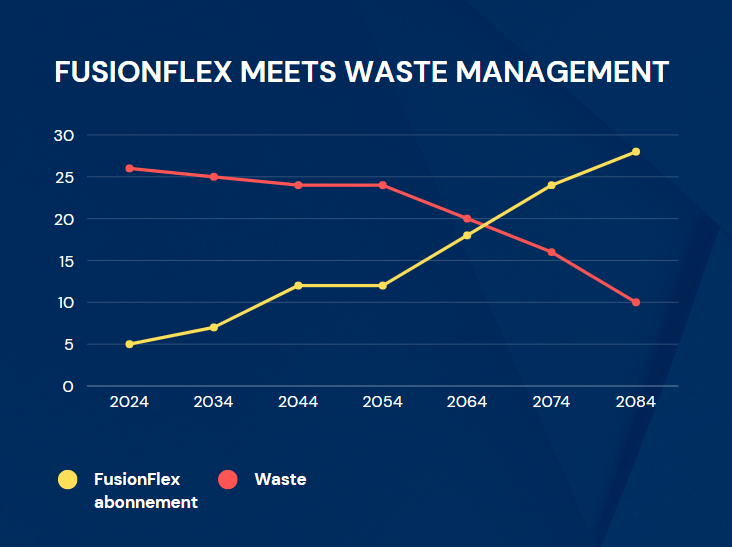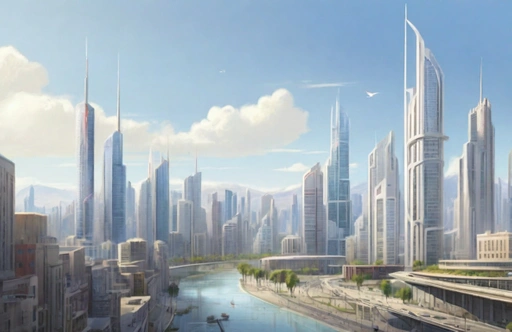Our picture of the future is about waste management and recycling. We thought about how will people collect, recycle, reduce or compost waste in the future? Will the waste mountain get smaller? What about incineration or landfill? These are two techniques that are also not beneficial to the environment. Recycling is already being used in 2023 and we plan to make it the norm in 2084.
Indoors, there is a home automation system run by AI. This watches your consumption of food and is in touch with all your devices. It works with a subscription for power and your devices. The subscription means you purchase appliances for a certain period of time. Within that period, you get a form of warranty. Instead of buying new devices every time, updates and repairs are provided. This way, things are not thrown away too quickly.

Through this subscription, shops also see consumers’ consumption behaviour, and they deliver your products to your home. Consumers can still make adjustments to this, but customised delivery can minimise packaging. If this system works well, the producer himself can accurately estimate how much needs to be produced. Consequently, there is hardly any waste on a societal scale.
Packaging is naturally made of compostable material. This way, it can break down without harming nature. Compostable material can be used in urban gardens. One example is packaging made of mycelium. This is injected into the package as foam and forms a compostable protective layer.

Bamboo is a great substitute for wood. Bamboo has little waste because pretty much anything can be used. It grows extremely fast and needs little nutrients and space. Roots and leaves are used as food for animals. Fibres are used to make clothes. It is used in cosmetic products. And the logs themselves can be used in construction and building furniture.
Every home with a home automation system is also equipped with a smart bin. Glass, plastic bottles and metal cans can be disposed of in a smart bin. For this, they will automatically receive a deposit in return because their smart bin is connected to bank details through the home automation system. As a result, these raw materials will no longer go to landfill.

All other waste (metal, seats…) will be put in smart containers. People use their ID to open this and they put their waste in it. Inside the container is a scale that measures how much waste you put in. People then pay according to how much waste they put in. Thus, people who produce more waste are charged more.
The waste is automatically collected by a waste management company. The vehicles run on hydrogen, mined from salt water. These are taken to a facility where all the waste is sorted by an AI system.

The waste that cannot be recycled is still incinerated, but little to no energy is lost in the process.
Conclusion:
In this system of home automation and smart waste management, technology, sustainability and efficiency come together in a beautiful way.
Managing consumption habits and minimising waste streams not only makes things easier for the individual, but also promotes social sustainability. Appliances are less likely to be thrown away, food is better tracked, both of which therefore reduce waste.
Using compostable material and bamboo as alternative raw materials contributes to a circular economy and reducing negative environmental impact. Through smart technologies, it not only addresses the waste problem but also raises consumer awareness of their impact on the environment. This system illustrates how innovation and technology can be used to bring about positive change, with sustainability at its core.
Credits: Mona Denayer Coetsier, Elias Timmerman, Emily Vanrobaeys, Jitse Ivens, Kasper Mornie, Matthew Lapierre

